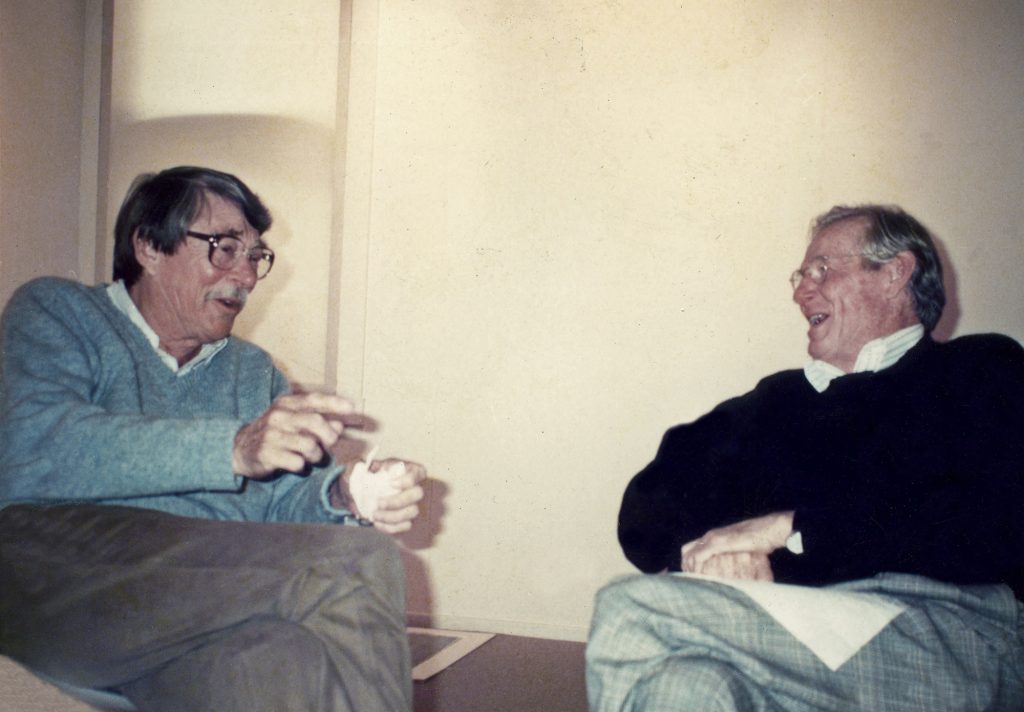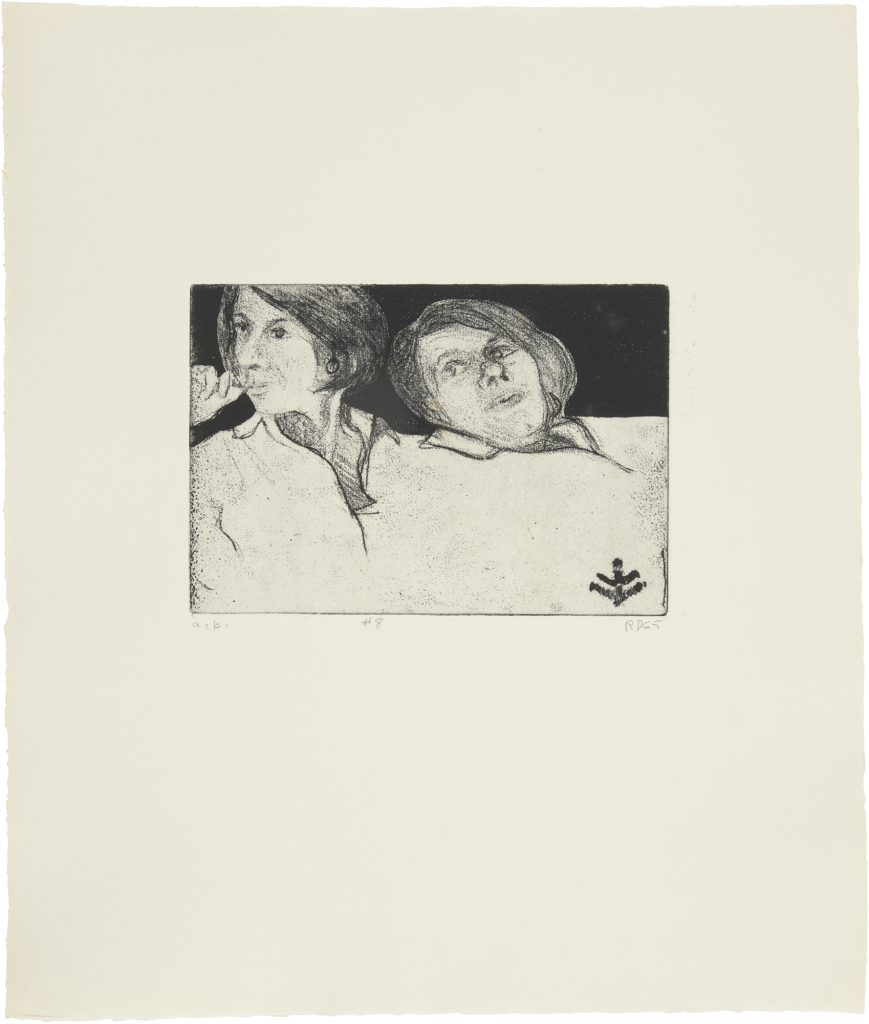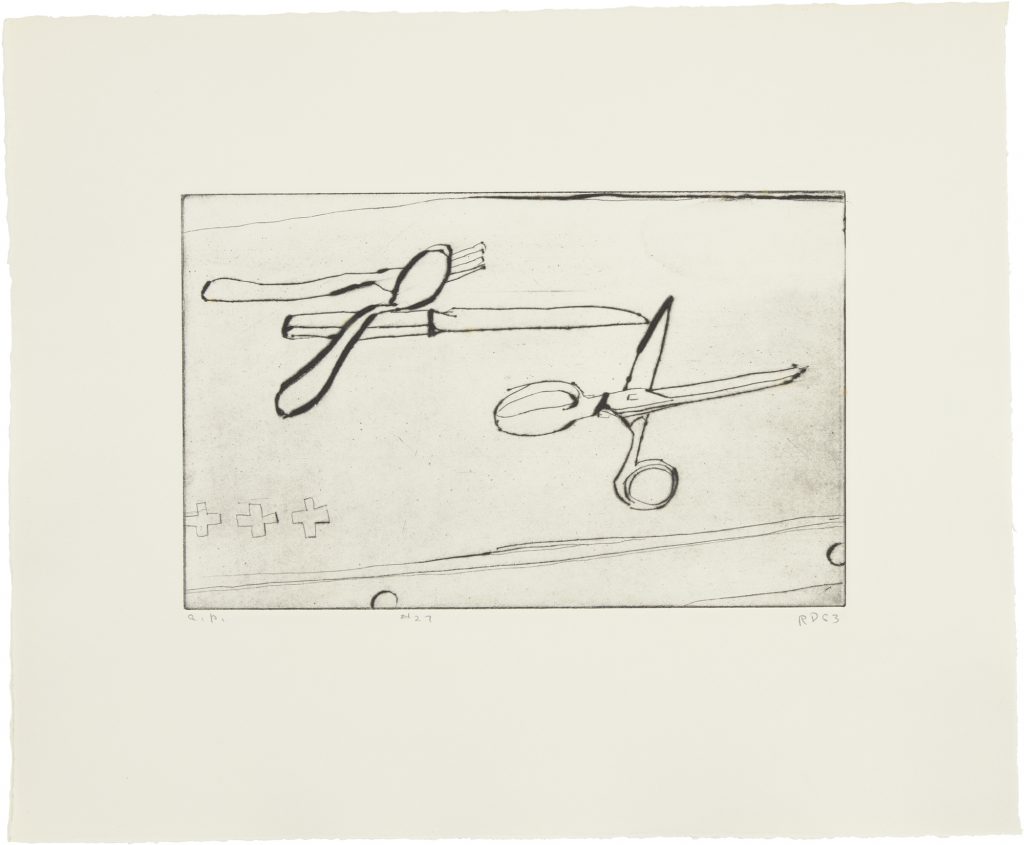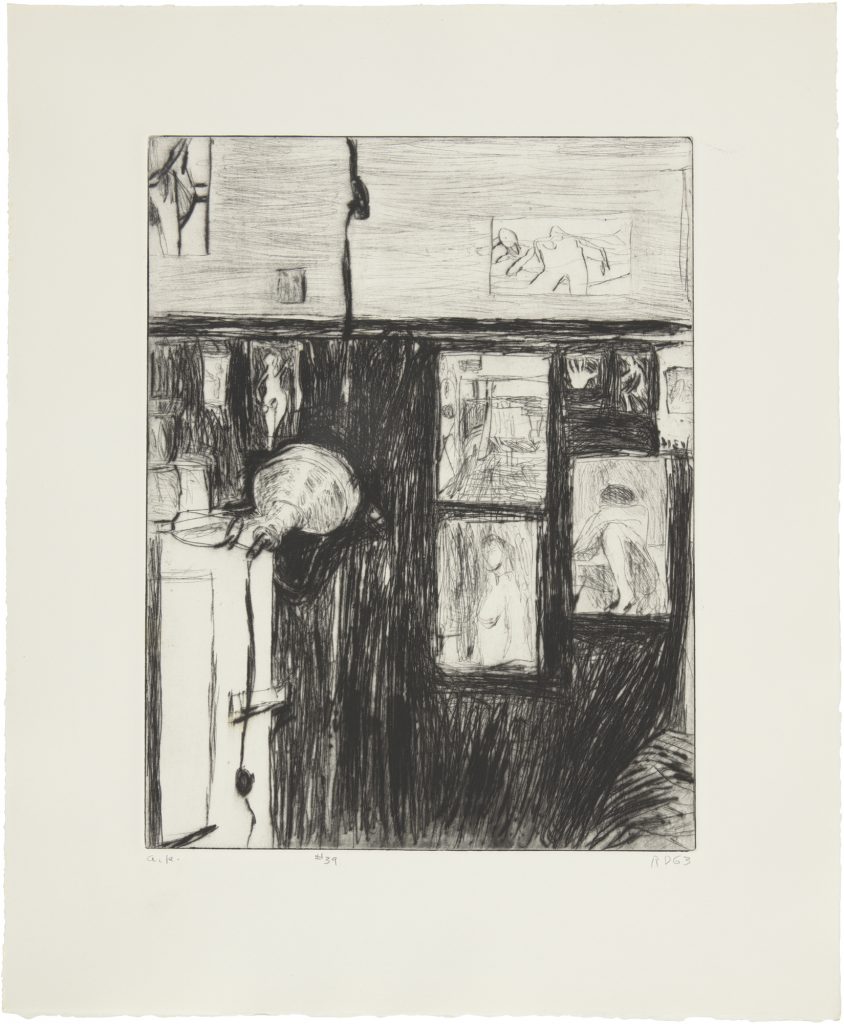Dear Wayne: Happy 100th
By Daisy Murray Holman
November 13, 2020
Wayne – I’m sure you have been asked where you’ve been keeping another brilliant talent. I’ve read two examples of it — the Morandi piece and now on Matisse — both first rate and alive to the subjects in a way which is unheard of today. Do keep both talents exercised. Love to you and Betty Jean from Phyllis and me. Dick 2.25.82
To honor Wayne Thiebaud’s centennial birthday, the Richard Diebenkorn Foundation Archives would like to share personal notes of appreciation sent between the two lauded artists. Diebenkorn and Thiebaud crossed paths for the first time in 1964 at Crown Point Press while working on print editions with Kathan Brown, and the two remained great appreciators of each other’s work, oscillating in and out of one another’s orbits for the next three decades until Diebenkorn’s death in 1993. The portfolios created at Crown Point Press in 1964, 41 Etchings Drypoints by Diebenkorn and Delights by Thiebaud, show their common joy and commitment to exploring the visual possibilities in intaglio printmaking.
Thiebaud’s long life, way with words, and incredibly open heart have allowed his audience to truly see an artist so moved by another that he regards his contemporary as a teacher. Thiebaud openly states that “he was very influential for me with color. I knew so little about color. It was only when I fell in love with some of the things that Dick loved, like the color in Persian and Indian miniatures, which also influenced artists like [Henri] Matisse and [Pierre] Bonnard – that tradition was amazingly helpful. But I really got that through Dick. Looking at his painting is what really excited me about going more into color.”1
Diebenkorn’s respect for Thiebaud was made clear—he was one of the few artists Diebenkorn invited into his studio. Diebenkorn also held a great amount of respect for individuals who could really write about art, a skill he believed he did not possess. The above note points to his enthusiasm for Thiebaud’s writing, but also to Diebenkorn’s sheer joy in reading eloquent writing.
Lovers of deep looking and individuals firmly committed to living in California, Thiebaud and Diebenkorn are both often given the title of a “painter’s painter” by critics and curators. In that vein, the letters of thanks for dinner and a pleasant evening are fitting. One can meet in a printshop, discuss color and Matisse, but still appreciate the importance of coming together over a good meal.
These small acts of community were commemorated when Paul Thiebaud invited Christopher Diebenkorn to curate a show of their fathers’ work together. The artists and their sons gathered for the Spring 1991 opening of “Thirty Years on Paper: Richard Diebenkorn and Wayne Thiebaud” at Campbell-Thiebaud Gallery in San Francisco, a short two years before Diebenkorn’s death. The mutual admiration shared by the artists shines through in a photograph from the evening pictured above.
Happy birthday, Wayne! We thank you for your brilliant work and generous spirit.
1. Wayne Thiebaud, “Wayne Thiebaud Interview with Steven Nash,” Richard Diebenkorn: A Retrospective, 2019, 325.




